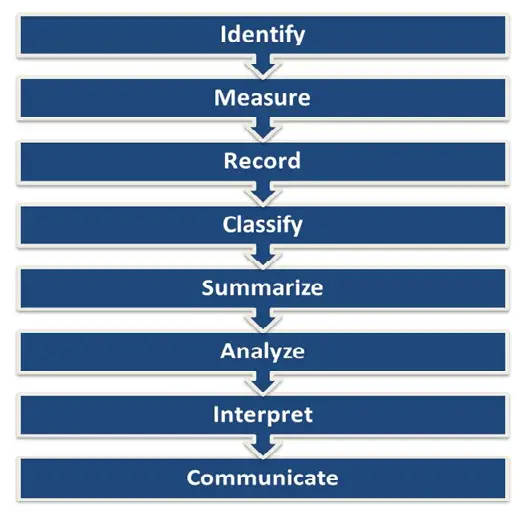Accounting Process
The word “Accounting” brings along with itself thousands of years of history and can be traced back to ancient times. There are proofs which suggest that accounting might be more than 7000 years old. Now, let’s just quickly get back to modern times and try to understand what really accounting and the accounting process is all about.
Definition of Accounting: Accounting is a set of concepts and techniques that are used to identify, measure, record, classify, summarize and report financial information of an economic unit to the users of the accounting information.
The economic unit is considered as a separate legal entity. Accounting information is widely used by various types of parties for several different reasons. Few of them are;
| Who uses it | Type of User | Main Purpose |
| Business Managers | Internal | For trends, budgeting and detecting performance bottlenecks |
| Owners | Internal | To interpret the profit and loss associated with the business |
| Employees | Internal | To check the financial health and keep a check on recent developments of the business |
| Investors | External | They provide risk capital, to keep a track of ROI and associated risk |
| Lenders | External | Banks, NBFCs etc. they are mainly concerned with the financial stability of a business to provide loans, overdraft, etc. |
| Government | External | Legal purposes of tax calculations, collect state and a country-level data |
| Research Agencies | External | To analyze financial health and accordingly provide ratings to the business |
| Creditors | External | To analyze the liquidity of a business and deciding a credit limit |
Process Flow of an Accounting Transaction
Example of Accounting Process: Let’s suppose there is a printer that was bought from HP for 5000 which was ultimately shown in the financial statements as an expense to the business.
Now, a purchasing manager looked into the expense at the year-end and recommended (the owners) a few cheaper alternatives to be considered for all future purchases.
Let us understand the ideal accounting process in this case
| Process step | Explanation of the steps |
|---|---|
| Identify | The transaction "identified" was the purchase of a printer. |
| Measure | The cost of the printer was "measured" as 5000. |
| Record | The transaction was "recorded" in books systematically as 5000. |
| Classify | The transaction was then moved to the ledger and "classified" with similar transactions. |
| Summarize | Here the ledger balance was "summarized" and converted into trial balance and financial statements accordingly. |
| Analyze | Purchase manager "analyzed" the financial statements at year-end. |
| Interpret | The analysis leads to the "interpretation" that the printer was costly and cheaper alternatives were available. |
| Communicate | This was "communicated" to the owners as a recommendation for future purchases of this kind. |
Short Quiz for Self-Evaluation
>Read Accounting Cycle

